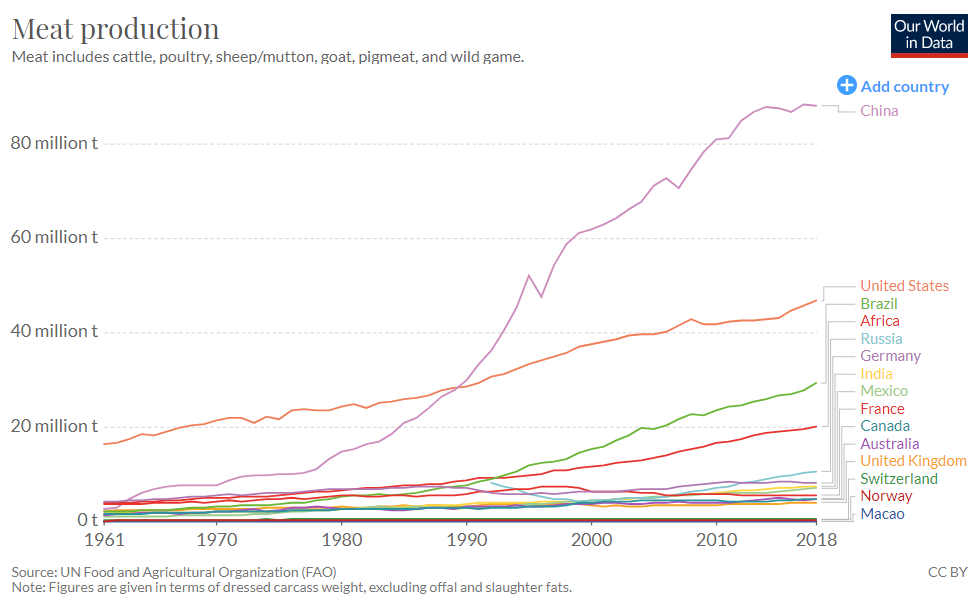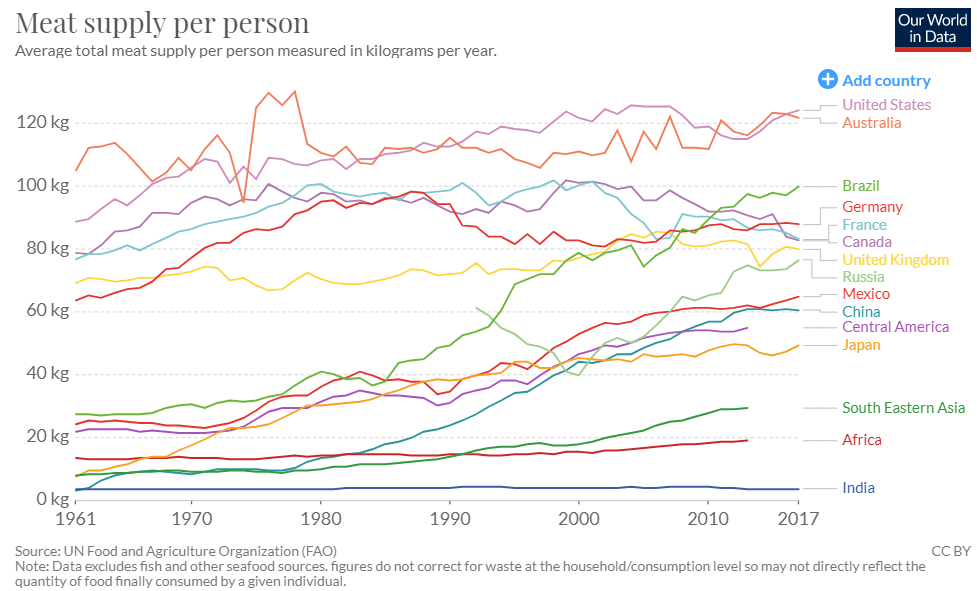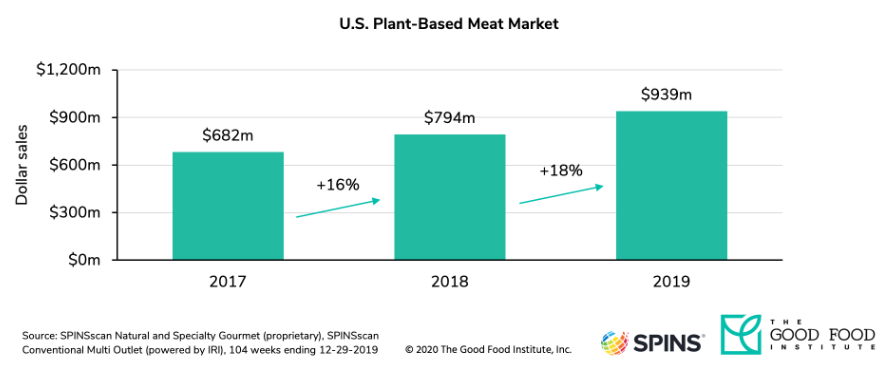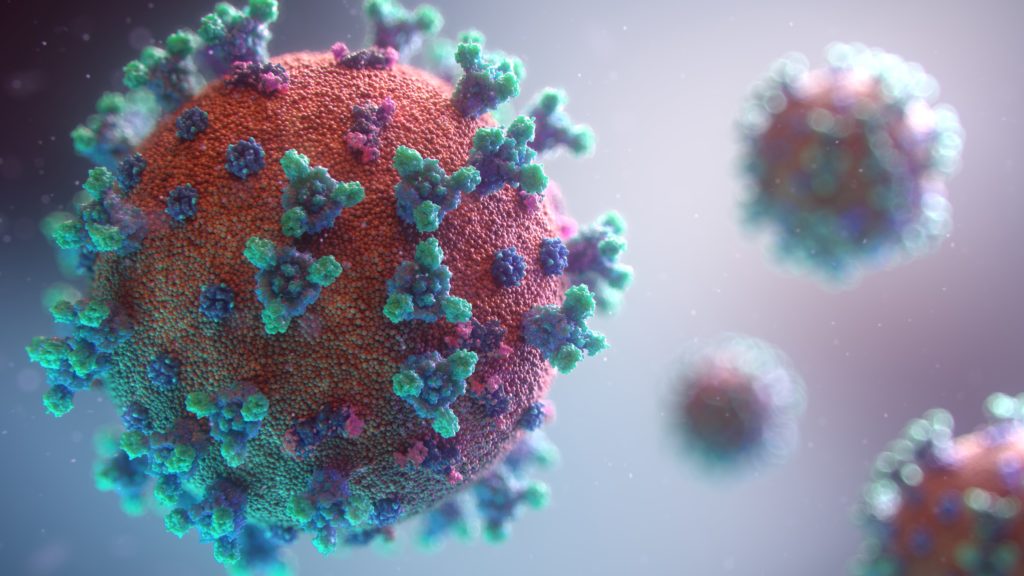
COVID-19 (the disease caused by the novel coronavirus) has the world on its feet, demanding immediate action and global relief. Quarantines, social distancing, layoffs, and the shut-down of thousands of businesses are just some of the damages the coronavirus is leaving behind. The world is struggling, and it’s time to focus on solutions that give urgent help to people in need. But when the worst is over and the world has time to reflect, some may notice a pattern of the causes of the coronavirus pandemic and others like it.
And that pattern is: eating animals.
Other infectious diseases like AIDS, Ebola, Nipah, SARS, bird flu, swine flu, and infections from E. coli have plagued the world in recent years and can be traced back to the consumption of wild and domestic animals.
- The leading theory behind the emergence of the AIDS virus in 1981 was through the hunting of infected chimpanzees, a disease which has since killed over 32 million people.
- The Ebola outbreak in 1995 has been traced back to the butchering and eating of fruit bats in the Democratic Republic of Congo.
- From pig farms in Asia came the Nipah virus in 1999 due to contact with sick pigs and contaminated meat.
- In 2003, the SARS outbreak impacted 8,096 people in 29 countries. SARS is a respiratory illness caused by a different coronavirus that originated from civet cat consumption in China. (The virus crossed over from bats to civet cats to humans at a wet market, like the one in Wuhan.)
- Influenza viruses A such as bird flu (transmitted from birds) and swine flu (from pigs) can spread to humans through contact with sick animals or eating undercooked infected meat. Influenza is one of the world’s most contagious diseases. H5N1 is a recent influenza strain impacting many people across the world with a 60% death rate. While varying in severity and impact, variations of the bird flu pop up every year.
- E. coli infections can spread from farm animals to humans through undercooked meat and infected manure spreading to other crops, as we saw in the 2006 spinach outbreak. In 2018, flooded pig farms due to Hurricane Florence carried antibiotic-resistant bacteria to nearby farms in the U.S. Water testing from previous floods have been found to exceed state and federal water quality guidelines for E. coli.
The connection between eating animals and infectious diseases goes back even further in time
Medical anthropologists identified that the first period of infectious disease began 10,000 years ago with the domestication of animals. Human measles came with the domestication of cows and sheep, a disease which over the past 150 years has killed 200 million people. Whooping cough was traced back to the domestication of pigs. Typhoid fever from domesticating chickens. Influenza from the domestication of ducks. The common cold from horses. The infamous Spanish influenza pandemic in 1918 from the bird flu, is estimated to have killed 50 million people.
Again, what do those outbreaks have in common? Eating animals.
All of the infectious diseases listed above are classified as zoonotic, meaning they come from animals. The CDC reports that ¾ of emerging infectious diseases are zoonotic.
According to the CDC, zoonotic diseases are spread from animals to humans through:
- Direct contact with the blood, mucous, feces, and other bodily fluid of infected animals.
- Indirect contact from being exposed to areas where infected animals live such as barns, chicken coops, soil.
- Through being bitten by an insect or tick.
- Eating infected meats, eggs, raw milk, even fruits and vegetables that have been contaminated by feces from an infected animal.
- Drinking or contacting water contaminated by feces from an infected animal.
There’s good news in all of this. There are ways we can reduce the amount of infected animals and diminish the spread of zoonotic diseases.
Solutions
Instead of just addressing the symptoms of the problem, why don’t we consider addressing the cause? As they say, prevention is the best medicine. A preventative approach can save lives, suffering, stress on healthcare systems, and resources such as money and health supplies. If no one gets sick in the first place, our world doesn’t need to staff overcrowded hospitals, shut down businesses, and layoff employees.
Eliminating factory farms and reducing meat intake will get to the root of the problem and prevent future pandemics.
Eliminate factory farms
Moving from factory farms to smaller-scale farms where animals live outside in healthier, less dense conditions can lower the risk of emerging diseases. In factory farms, viruses can spread rapidly. Animals are crammed close together, living and breathing in feces carrying bacteria and viruses. There’s little ventilation or access to sunlight (which can destroy the influenza virus) leaving them at higher risk of infection.
The de-intensification of animal farming through removal of factory farms would decrease the risk of emerging pandemics. Currently, it’s estimated that 99% of animals raised for meat, dairy, and eggs in the U.S come from factory farms.
The need for factory farming is driven by consumer demand. Factory farms were designed to meet the extraordinarily high demand for meat around the world. In the U.S., an average person eats an average of 200 pounds of meat a year. In order to reduce the amount of factory farms, the demand for animal products needs to decrease substantially.
Unfortunately, the world is not yet on that trajectory. Recent data show how meat production and consumption is trending upwards globally, with the U.S and China leading the world in the amount of meat produced annually.
Meat supply per person, led by the U.S and Australia.
Reduce meat, dairy, and egg intake with plant-based foods
Shifting away from animal agriculture to a more plant-based diet and using alternative-meats can reduce the likelihood of zoonotic diseases transmitting and spreading through humans. Fortunately, plant-based meat options are available and growing. Impossible Foods, Gardein, and Beyond Meat are just some of the “plant meat” options growing in taste and popularity. The plant-based “Impossible Burger” even made it into large chain-restaurants like Burger King, Red Robin, and Little Caesars. Some people are choosing to forgo meat-alternatives altogether by adopting a nutritious whole foods, plant-based diet while meeting their daily protein needs.
The graph below shows increases in sales of plant-based meats in the U.S in recent years.
A 2018 Gallup poll estimated that 3% of the United States population is vegan and 5% is vegetarian. Great Britain saw a fourfold increase in the amount of vegans between 2014 and 2019, from .25% to 1.16% of the population. Although the amount of dedicated vegans and vegetarians makes up a relatively small portion of the population, those who are veg-curious seem to be on the rise. Sign-ups to participate in Veganuary (going vegan for 1 month) more than doubled from 168,500 people in 2018 to 400,350 in 2020. Additionally, Google search trends for “veganism” has surged in recent years for many different countries including Russia, Germany, and Spain.
Coronavirus Conclusions
The higher demand for plant-based foods is not yet reflected in the world’s animal agriculture systems. But hopefully, in the years to come we will see a much more dramatic change in how our society operates while understanding the consequences of food choice on the animals, the environment, and collective human health.
If there’s anything coronavirus has taught us, it’s that governments and people can be quick to change their behavior in order to curtail a global threat. Countries are collaborating, people are practicing social distancing, the wealthy are donating, and companies are asking employees to work from home. There’s hope that we can band together again to prevent other global threats like climate change, wealth inequality, and future pandemics.
The rampant spread and destruction of coronavirus is pushing us to rethink our current systems, but the question is: are we willing to do so?
__________________________________
Thank you
Our world in data graphs from: https://ourworldindata.org/meat-production
Plant-based meat sales graph from: https://www.gfi.org/marketresearch
Thank you to my Dad, Brother, and Ryan for providing thoughtful feedback during the creation of this piece.
The author meeting a pig for the first time: (It was a very great day)
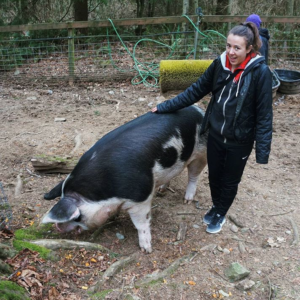
Get more like this—Sign up for our daily inspirational newsletter for exclusive content!
__
Photo: Fusion Media via Unsplash; @thrivehappy via Instagram

